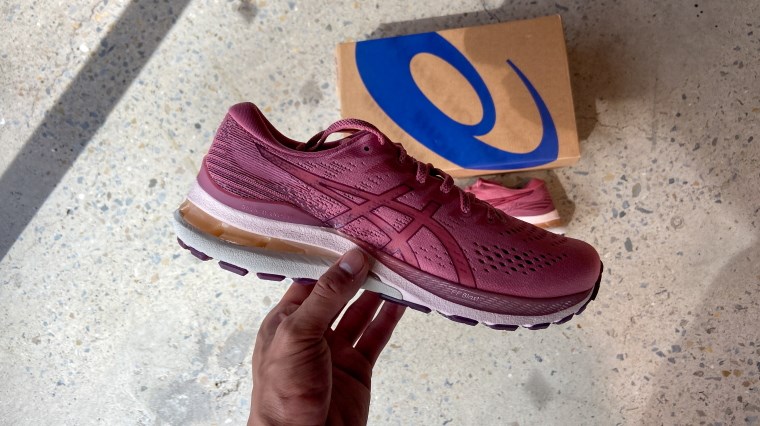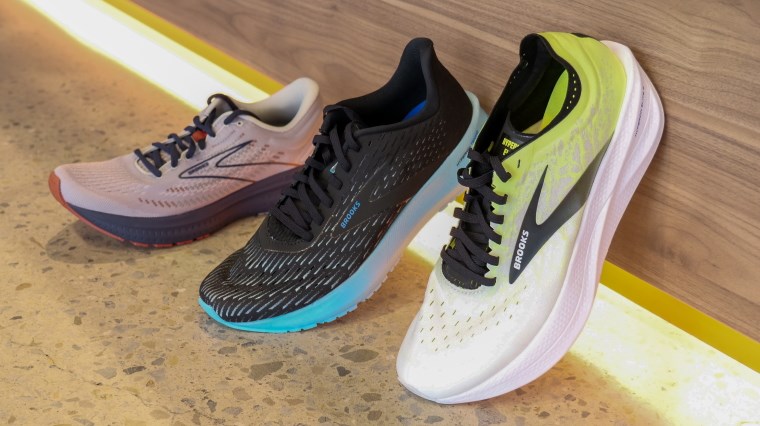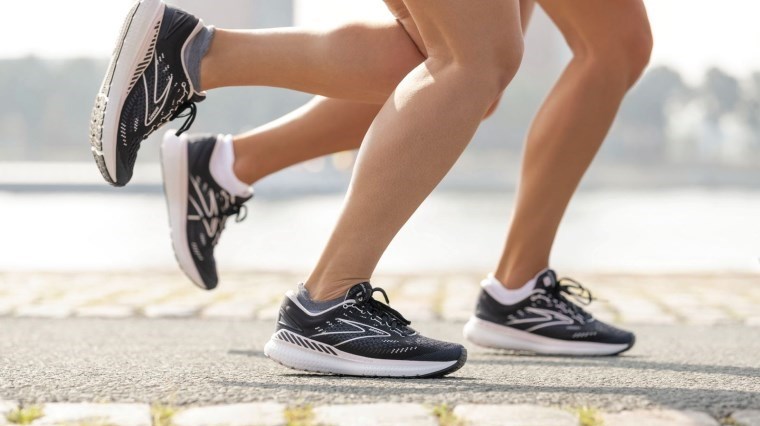Running Shoe Guide 2: How To Break In Your New Running Shoes

You’ve unboxed your new running shoes – tick! You’ve checked they’re the proper fit for your feet with our guide on What To Do When Your New Running Shoes Arrive – tick!
Now, as excited as you are to dash straight to the pavement it’s important to slow down to make sure you have the best possible experience when the road is calling.
From the first time you lace up, to your first run, to clocking up serious mileage we talk you through the steps of breaking in your new running shoes to run happy and free of injury for the long haul.
We also highlight the benefits of shoe rotation, and the important part your old running shoes can play to make this transition as smooth and comfortable as possible as your muscles adapt to your new ride. With a little bit of time and tips from our running shoe experts, you’ll transform your new running shoes into your go-to running shoes to glide over the mileage ahead.
Build trust in your running shoes
When putting foot to pavement in your new running shoes for the first time and the anticipation is bubbling inside you, it’s important to take a breather and take it slow.
Before you even get to this stage, we recommend wearing your new running shoes around the house with the style of running socks you intend to run in for a few days to let your feet and shoes get to know each other.
The goal is to allow your feet to adapt to your new running shoes to avoid pain, irritation or injury during the transition to new footwear. Like increasing your distance, speed or overall fitness, it’s a gradual process to prevent you being put on the sidelines of your training.
First run: Take it slow and steady
If you’re used to running in a shoe that has degraded cushioning for quite some time, a new running shoe can offer a totally fresh and rejuvenating experience – you may feel lighter, quicker and ready to conquer the road, but it’s important not to go too fast too soon.
The phrase don’t run before you can walk should be taken literally here. Your feet and body need time to adapt to your new running shoes – and to some degree your running shoes need time to adapt to your feet, which will happen naturally as you wear them in.
Once you’ve built trust in your running shoes and you feel ready to run, keep the pace consistent and don’t push too hard. Even if long distance running is your thing, do a short run of no longer than 30 minutes or an easy-going run of about 5km to gain a feel of the shoes and take walking breaks where necessary.
Subconsciously you will be finding the best line of transition to run comfortably and efficiently, but it’s also important to consciously check in with your body – scanning for points of pain, irritation or discomfort.
Shoe rotation: Adapting to your new running shoes

If your old running shoes are in a reasonable condition, you can phase them out slowly as part of your shoe rotation. You can read When Should You Replace Your Running Shoes? to give you an idea of whether they’re still road-worthy, or whether they’re too far gone and not only may hinder your performance but cause pain and present an injury risk. If this is the case, don't push through the pain, thank your old running shoes and move on.
Your biomechanics may adapt slightly to conform to the new running shoes, particularly if there’s a change in heel-to-toe offset and stack height. For example, the heel elevation in a running shoe with a 12mm heel-to-toe drop can feel like you’re wearing mini skyscrapers if you’re used to a shoe on an 8mm heel-to-toe drop that provides a more close-to-ground feel. Your running form may shift slightly to accommodate the difference in the slope from heel-to-toe or the stack height of your new running shoes.
Imagine snapping your fingers to switch between your new running shoes and old running shoes mid-run. The differences in engineering may be a jolt to your body and your mind will have to tweak your running mechanics – be it in terms of running form or footstrike - with the sudden change in feedback from your feet. Gradually transitioning is recommended to prevent any trip ups on your journey to running in a way that feels natural and stable in a new shoe.
Also, be aware that stress will be targeted differently from your old running shoes to your new running shoes. Even if they’re the same model, the way the running shoe has compressed over time will result in variances in cushioning and support, with the older model being ultimately worn out, less supportive and less effective, and the new model feeling firmer and a little less flexible underfoot.
How long will it take to break in your new running shoes?

Whether it’s improving your fitness or running in new running shoes, your muscles are skilled at adapting with time. A little bit of patience and know-how will ensure your new running shoes will be your best mates for the road.
It generally takes 5 weeks to transition fully to your new running shoes and the time may be shorter or longer based on whether it’s simply a new version of the same model, or an entirely new brand or model with a different heel-to-toe offset and stack height, fresh technologies and engineering features.
Ideally your old running shoes will have a few more runs left in them to allow you to transition slowly. For a runner that runs 5 times a week, this journey may look something like this:
- Week 1: 20% new running shoes, 80% old running shoes (1 run in new running shoes, 4 runs in old running shoes)
- Week 2: 40% new running shoes, 60% old running shoes (2 runs in new running shoes, 3 runs in old running shoes)
- Week 3: 60% new running shoes, 40% old running shoes (3 runs in new running shoes, 2 runs in old running shoes)
- Week 4: 80% new running shoes, 20% old running shoes (4 runs in new running shoes, 1 run in old running shoes)
- Week 5 and beyond: 100% running in new running shoes (or wearing them as part of your shoe rotation)
Only increase the time you spend per week running in your new running shoes compared to your old running shoes if you feel comfortable and confident, otherwise at any stage you can slow this transition right down or drop the usage of your old running shoes by as little as 10% each week until they are phased out completely. If you prefer, you can think of this transition in terms of mileage instead of running sessions, and you don’t have to count every minute or kilometre.
If your old running shoes have long since retired that’s OK. The most important thing is you transition gradually by running at a pace and distance that feels right for you. Try not to overdo it and by no means should you ever wear a new pair of running shoes on race day.
It’s all about building trust in your running shoes to take care of your feet and have the best experience on the road.
Happy running!
If you liked this, then you’ll love:
Running Shoe Guide 1: What To Do When Your Running Shoes Arrive
Running Shoe Guide 3: How To Clean And Care For Your New Running Shoes
